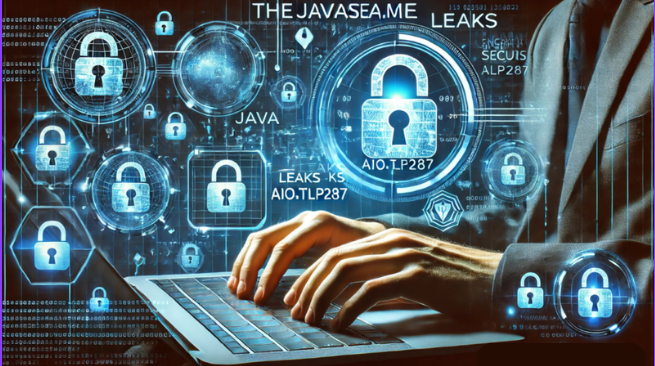Introduction to thejavasea.me Leaks AIO-TLP287
Thejavasea.me has emerged as a significant online platform that has drawn attention for its leaked information concerning various entities and items. This website has garnered a notable reputation in certain circles, primarily due to its role in disseminating sensitive data that often circulates within the purview of digital security and privacy. Among the myriad of leaks attributed to thejavasea.me Leaks AIO-TLP287 stands out, indicating a specific dataset that has captured the interest of researchers, security professionals, and the general public alike.
The term “leaks” in this context refers to unauthorized disclosures of confidential information or data. The leaks associated with AIO-TLP287 provide critical insights and possible revelations regarding ongoing issues in both the informational and cybersecurity fields. The focus on AIO-TLP287 indicates not only the specific nature of the data but also hints at its relevance in broader discussions concerning data privacy, accountability, and the implications of leaked materials.
In understanding the context and content of these leaks, stakeholders, ranging from cybersecurity experts to everyday internet users, are better equipped to navigate the complexities surrounding data confidentiality and the ethical considerations that arise from such disclosures.
Analyzing the Content of the Leaks
The leaks attributed to thejavasea.me, specifically regarding AIO-TLP287, contain a variety of sensitive information that raises significant concerns about data security and privacy. One particularly noteworthy aspect of these leaks is the nature of the data revealed, which includes confidential project documentation, proprietary algorithms, and user credentials. These elements of the leaks highlight a troubling breach of trust and emphasize the vulnerabilities inherent in digital environments.
Among the disclosures, users’ personal information and login credentials are especially alarming. The exposure of such data poses a serious risk of identity theft and unauthorized access to accounts tied to the AIO-TLP287 system. Additionally, technical documentation regarding the system’s architecture and design could provide malicious actors with insights into exploiting potential weaknesses. The aggregate of this leaked information signals not only a breach of security protocols but also a failure in safeguarding sensitive data that organizations rely on.
Furthermore, the potential ramifications extend beyond individual users. Organizations utilizing AIO-TLP287 may face reputational damage and legal ramifications stemming from data breaches. This scenario raises questions regarding compliance with data protection regulations such as GDPR and HIPAA, which dictate stringent measures to safeguard user data. The implications of thejavasea.me leaks stretch across several domains, highlighting a need for enhanced security measures. Organizations must be vigilant and proactive in their approach to safeguard sensitive information and mitigate risks associated with similar future incidents.
Ultimately, the content of the leaks raises significant concerns that call for a reevaluation of existing security practices within the context of AIO-TLP287. Awareness and prompt action are essential in addressing the vulnerabilities exposed through these revelations. The ongoing discourse surrounding such leaks underscores the importance of robust cybersecurity frameworks in protecting data integrity and maintaining user trust.

Implications and Consequences of thejavasea.me Leaks AIO-TLP287
The recent leaks from thejavasea.me related to AIO-TLP287 have raised significant concerns for both individuals and organizations alike. One of the primary implications of such leaks is the heightened risk to security protocols across various sectors. Sensitive information that is made publicly available can lead to unauthorized access, exploitation, or identity theft, which is particularly alarming for businesses handling personal data. Companies face the dilemma of reinforcing their cybersecurity frameworks while contending with the repercussions of diminished consumer trust.
Another critical aspect involves privacy concerns. With personal and proprietary information leaking into public domains, individuals may find their privacy infringed upon, potentially leading to harassment or other aggressive actions. Furthermore, organizations may suffer reputational damage, which can hinder their customer relations and lead to financial losses. The psychological effects of data leaks can also contribute to an environment of fear and mistrust among users, which may deter them from engaging with online platforms.
The implications extend beyond immediate security and privacy issues; they can influence future policies and practices regarding data protection and leak prevention. Policymakers and corporate leaders must recognize the importance of instituting robust security measures. This awareness can foster a culture of transparency and accountability within organizations while encouraging the adoption of preventative strategies to mitigate risks associated with cyber threats. The ramifications of thejavasea.me leaks thus compel stakeholders to reevaluate their current practices and consider investing in advanced security technologies and employee training programs, thereby preparing for an era where such data breaches may become increasingly common.
Protecting Yourself from Similar Leaks
In the wake of the recent leaks from thejavasea.me Leaks AIO-TLP287, it is crucial for individuals and organizations to understand how to safeguard themselves against potential vulnerabilities. The first step in this protective strategy is to prioritize data privacy. Users should regularly assess and minimize the personal information they share online, limiting exposure to unnecessary risks. Awareness of the privacy settings on social media platforms and online services is vital; these settings can often mitigate data sharing beyond one’s intention.
Moreover, implementing robust security measures is essential in protecting sensitive information. Utilizing strong, unique passwords for different accounts can significantly reduce the likelihood of unauthorized access. Password managers can assist in generating and storing these complex passwords securely. Additionally, enabling two-factor authentication (2FA) wherever possible adds an extra layer of security, deterring potential breaches.
Keeping software and operating systems up to date is another critical preventative measure. Regular updates often include security patches that address vulnerabilities exploited by cybercriminals. Users should also consider using reputable antivirus and anti-malware software, which can provide an extra defense against malicious attacks and data leaks.
Staying informed about potential threats is equally important. Engaging with cybersecurity blogs, forums, and newsletters can help individuals stay abreast of the latest security trends and emerging vulnerabilities. Resources from organizations such as the Cybersecurity and Infrastructure Security Agency (CISA) provide essential updates on threats that may impact personal or organizational data.
Lastly, educating oneself on recognizing phishing attempts and other social engineering tactics is fundamental. This awareness can significantly reduce the risk of inadvertently exposing sensitive information. By implementing these strategies, individuals can build resilience against data leaks similar to those highlighted by thejavasea.me AIO-TLP287 incident, ensuring their information remains secure in a digital landscape fraught with risks.

